
Concept explainers
a.
Use the regression feature of a graphing utility to find a model of the form
a.
Answer to Problem 48E
Explanation of Solution
Given information:
The table shows the measurements (in feet) of a lot bounded by a stream and two straight roads that meet at right angles (see figure).
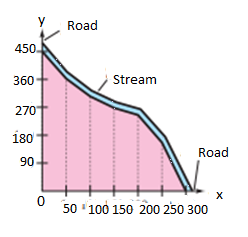
Use the regression feature of a graphing utility to find a model of the form
Calculation:
Consider the following table
To determine the regresion model using the graphing utility
Press stat, the display will be
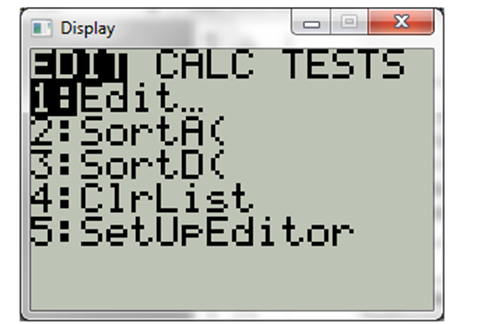
Now select edit, the display will be
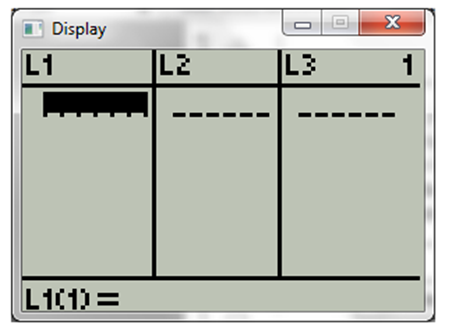
Now provide the data under the columns of list 1 and list 2.
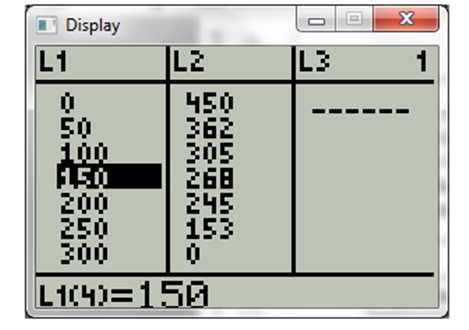
Now press stat and choose calc, the display will be
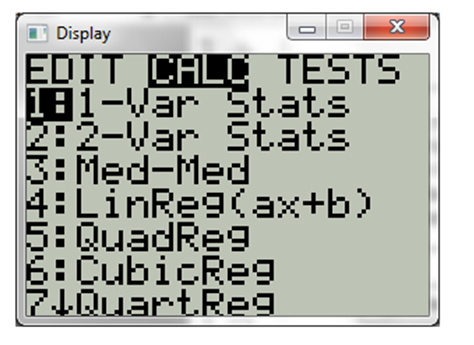
Now choose cubic reg. the display will be
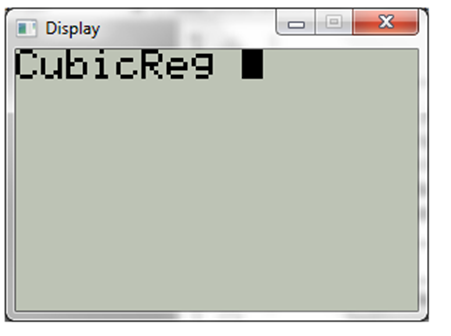
Now press enter. The display will be
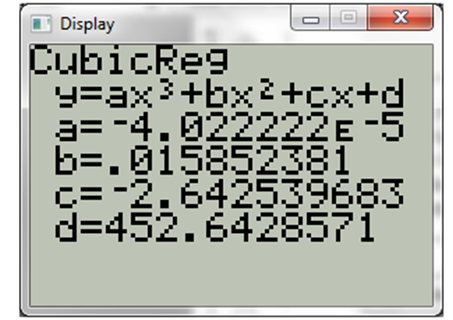
Hence the cubic regression model of the above data is
b.
Plot a utility graph.
b.
Answer to Problem 48E
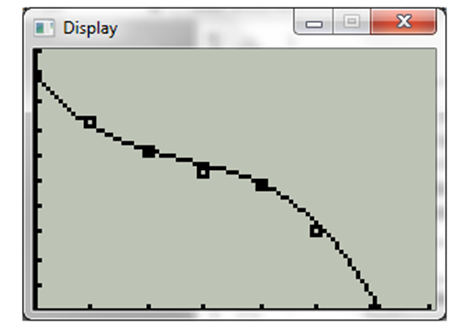
Explanation of Solution
Given information:
The table shows the measurements (in feet) of a lot bounded by a stream and two straight roads that meet at right angles (see figure).
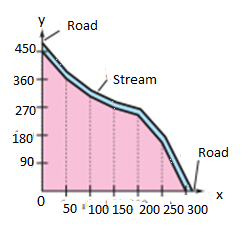
Use the graphing utility to plot the data and graph the model in the same viewing window.
Calculation:
Consider the following table
To plot the data, proceed as follows.
Press 2nd Y. The display will be
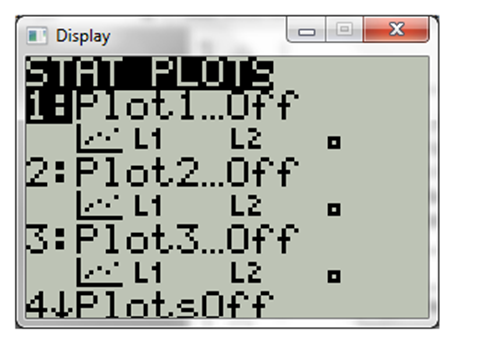
Now press enter and choose on. The display will be
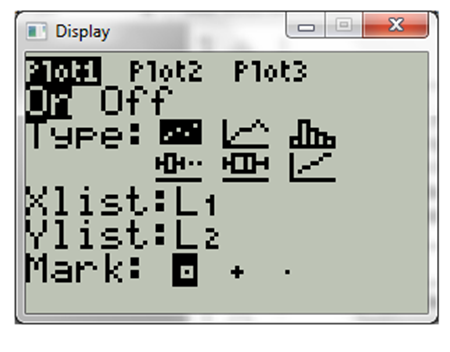
Now press Window to choose the proper scale. The display will be
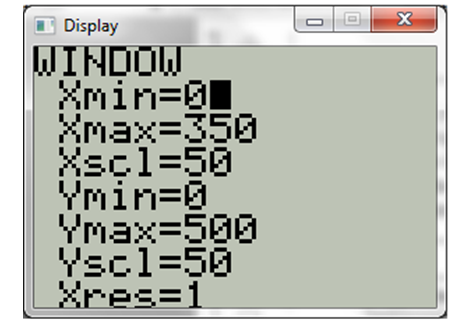
Now press graph, the display will be
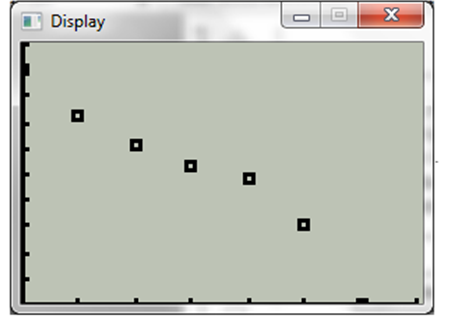
To plot the regression equation, proceed as follows.
Now press
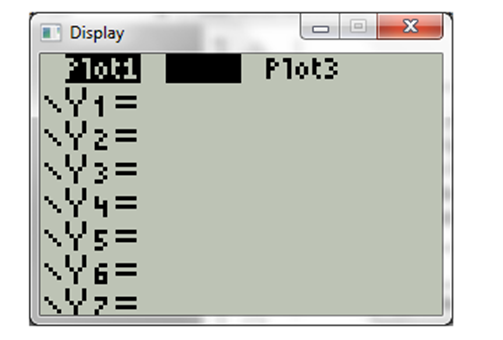
Now provide the equation, the display will be
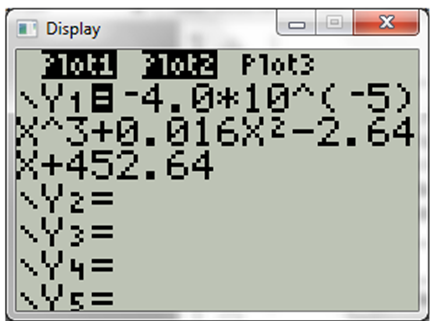
Now press graph, the display will be
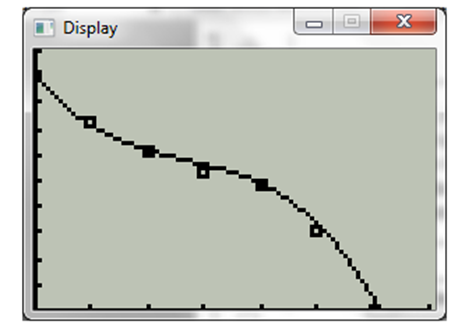
c.
Find the area of the lot.
c.
Answer to Problem 48E
Explanation of Solution
Given information:
The table shows the measurements (in feet) of a lot bounded by a stream and two straight roads that meet at right angles (see figure).
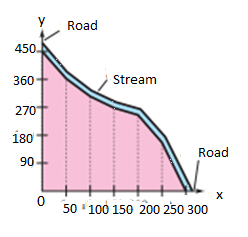
Use the model in part (a) to estimate the area of the lot.
Calculation:
Define the dimensions of the rectangles as follows:
Width:
Height:
Hence,
Now approximate the area as the sum of the areas of
Now use the properties of summations.
Now find the exact area by taking the limit as
Divide individually within the paranthesis
Now replace
Hence, the under the curve is
Chapter 12 Solutions
Precalculus with Limits
- Use the following graphs to evaluate the given one-sided limit. Answer exactly. y = f (x): y = g(x): 8 6 ν -8-6-4-2 2- 1-2-2 -4 -6 -8 ° 4 lim (f(x)+g(x)) = x+2+ 8 6 2 ν 0 x x 6 8 -8 -6-4-2 2 6 8 -2 -4 -6 -8arrow_forwardQuestion 1 The points A = (-2, 3, 2) and B = (4, 1, 4) are reflections of one another in a plane S. Find an equation for S.arrow_forwardThe graph below is the function f (x) -D -3-2 4 3 2 Q2 03 Find lim f(x) = x-1- Find lim f(x) = x−1+ Find lim f(x) = x-1 Find f (-1) = 3 4 5arrow_forward
- i circled the correct answer and i did most of the question but i cant figure out how to add both residues to get the correct answer could you please show me how to do itarrow_forwardQuestion 3 Starting at the point (0, −2,0), I walk up the hill z = 4-x² — y². The projection of my path on the xy plane is the line y = 2x-2. (a) At what point on my path is my altitude (the z-value) the greatest? (b) What is the slope m of my path (taking the z-axis to be vertical) when I am at the point (1, 0, 3)? [Hint: Parametrize my path (take x to be t).]arrow_forwardI circled the correct, could you explain using stokearrow_forward
- Use Euler's method to numerically integrate dy dx -2x+12x² - 20x +8.5 from x=0 to x=4 with a step size of 0.5. The initial condition at x=0 is y=1. Recall that the exact solution is given by y = -0.5x+4x³- 10x² + 8.5x+1arrow_forwardFind an equation of the line tangent to the graph of f(x) = (5x-9)(x+4) at (2,6).arrow_forwardFind the point on the graph of the given function at which the slope of the tangent line is the given slope. 2 f(x)=8x²+4x-7; slope of the tangent line = -3arrow_forward
 Calculus: Early TranscendentalsCalculusISBN:9781285741550Author:James StewartPublisher:Cengage Learning
Calculus: Early TranscendentalsCalculusISBN:9781285741550Author:James StewartPublisher:Cengage Learning Thomas' Calculus (14th Edition)CalculusISBN:9780134438986Author:Joel R. Hass, Christopher E. Heil, Maurice D. WeirPublisher:PEARSON
Thomas' Calculus (14th Edition)CalculusISBN:9780134438986Author:Joel R. Hass, Christopher E. Heil, Maurice D. WeirPublisher:PEARSON Calculus: Early Transcendentals (3rd Edition)CalculusISBN:9780134763644Author:William L. Briggs, Lyle Cochran, Bernard Gillett, Eric SchulzPublisher:PEARSON
Calculus: Early Transcendentals (3rd Edition)CalculusISBN:9780134763644Author:William L. Briggs, Lyle Cochran, Bernard Gillett, Eric SchulzPublisher:PEARSON Calculus: Early TranscendentalsCalculusISBN:9781319050740Author:Jon Rogawski, Colin Adams, Robert FranzosaPublisher:W. H. Freeman
Calculus: Early TranscendentalsCalculusISBN:9781319050740Author:Jon Rogawski, Colin Adams, Robert FranzosaPublisher:W. H. Freeman
 Calculus: Early Transcendental FunctionsCalculusISBN:9781337552516Author:Ron Larson, Bruce H. EdwardsPublisher:Cengage Learning
Calculus: Early Transcendental FunctionsCalculusISBN:9781337552516Author:Ron Larson, Bruce H. EdwardsPublisher:Cengage Learning





